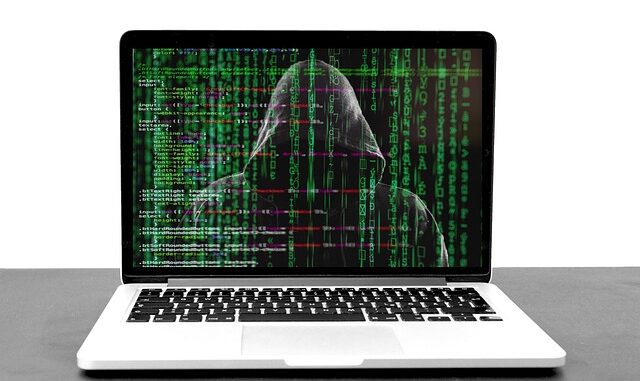
Summary
A critical vulnerability in Ivanti’s Endpoint Manager Mobile (EPMM) software has exposed two NHS trusts to a cyberattack, potentially compromising sensitive patient data. The attackers, suspected to be based in China, exploited the vulnerability to gain access to trust networks. This incident highlights the increasing vulnerability of critical infrastructure to sophisticated cyberattacks and emphasizes the need for robust security measures.
Dont let data threats slow you downTrueNAS offers enterprise-level protection.
** Main Story**
So, you probably heard about the recent cyberattack targeting a couple of NHS trusts, right? It all stemmed from a vulnerability in Ivanti software, and it’s really sent shockwaves through the UK’s healthcare system. Honestly, it just highlights how big of a threat ransomware and data breaches are becoming, especially when you’re talking about critical infrastructure. Let’s dig into what happened, why it matters for the NHS, and what we can do to keep this from happening again.
The Ivanti Problem
Okay, so the problem was this vulnerability in Ivanti’s Endpoint Manager Mobile (EPMM) software. Basically, it’s a tool that lets companies manage their employees’ phones and tablets. This flaw let hackers skip the usual login process and get right into the systems. They could then mess with things, steal data, the whole nine yards. EclecticIQ, a cybersecurity firm, figured out that University College London Hospitals NHS Foundation Trust and University Hospital Southampton NHS Foundation Trust were the unlucky targets.
Turns out, the attackers – and the finger’s pointing at folks in China – used this opening to sneak into the trusts’ networks. It gave them access to things like staff phone numbers and those all-important authentication tokens. Now, they’re still figuring out the full damage, but the fear is that patient data could be at risk as well. Which, frankly, is terrifying. And here’s the kicker: this isn’t a one-off. Ivanti has a history of these vulnerabilities, and some of them have been exploited before. You’d think they’d get on top of it. This constant cycle really underscores the importance of staying on top of software updates and patching as soon as you can. It’s like locking the door before the burglar comes calling, you know?
What This Means for the NHS
What does it mean for the NHS and well, everyone else? Well, it’s a wake-up call about how vulnerable critical infrastructure is, especially when it comes to healthcare. The NHS is sitting on a mountain of sensitive personal data. Think about it, millions of patients! That makes it a giant target for cybercriminals, doesn’t it? Can you imagine what a successful ransomware attack could do? It could shut down vital services, put patient care at risk, and even lead to the loss of irreplaceable medical records. It’s not just about money; it’s about lives.
That’s why there’s such an urgent need to ramp up cybersecurity investments across the NHS. We’re talking about things like solid vulnerability management programs, better security training for staff, and advanced systems that can spot and respond to threats in real-time. To tell you the truth it wouldn’t hurt other sectors too! It’s not just about preventing attacks; it’s about being prepared for when, not if, they happen. A colleague of mine likes to say “there’s no such thing as perfect security, its about levels of robust security”.
How to Stay Safe
So, what can organizations do to protect themselves from ransomware and data breaches? Well, a few things stand out. Let’s break it down:
-
Proactive Patching: Patch early, patch often. Don’t wait until it’s too late. Prioritize those critical systems and anything exposed to the internet. A stitch in time saves nine, as they say.
-
Multi-Factor Authentication (MFA): MFA is your friend. It’s like adding an extra lock to your front door. It makes it way harder for attackers to get in, even if they have your password. Get MFA on everything.
-
Security Awareness Training: Train your people! They’re your first line of defense. Teach them how to spot phishing emails, dodgy links, and other common threats. A well-trained team can stop a lot of attacks before they even start.
-
Incident Response Plan: Have a plan! Know what to do if you get hit. How will you detect the attack? How will you contain it? How will you fix the problem? Test your plan regularly, and keep it updated.
-
Data Backups: Back up your data, and back it up often. Keep those backups safe and secure. If the worst happens, you can restore your systems and data without giving in to ransomware demands.
Final Thoughts
The Ivanti situation, and what happened to those NHS trusts, should be a reminder that ransomware and data breaches are a constant threat. Organizations need to be proactive and have layers of security. I’m talking about managing vulnerabilities, training employees, and having a solid incident response plan. Because honestly, the cost of doing nothing can be devastating, especially for critical services like the NHS. And let’s be real, it’s not just about the NHS – it’s about protecting everyone’s data and well-being. And that’s something we can all agree on, right?


The focus on proactive patching is crucial. Could a coordinated, industry-wide effort to share threat intelligence on vulnerabilities, perhaps through a secure platform, significantly reduce the window of opportunity for attackers targeting critical infrastructure like the NHS?
That’s a fantastic point! An industry-wide platform for sharing threat intelligence would be incredibly valuable. Imagine the impact of real-time vulnerability data, coupled with coordinated patching efforts. It could definitely level the playing field and give defenders a much-needed edge against attackers. A secure platform would be essential for maintaining confidentiality and trust within the community.
Editor: StorageTech.News
Thank you to our Sponsor Esdebe